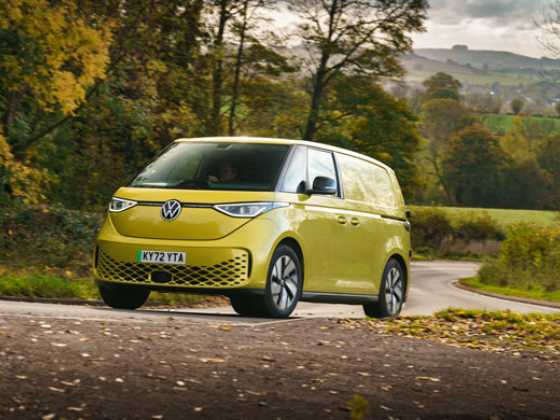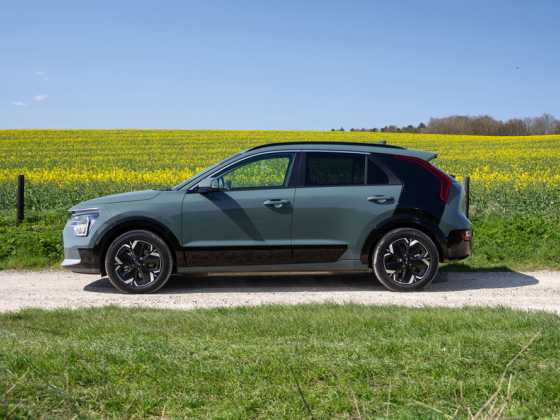Škoda Fabia
The Škoda Fabia has long offered value for money, larger-than-average interior space and low running costs. The third-generation model is just as multi-faceted, as Richard Gooding discovers
 The Škoda Fabia is an important car for the Czech company. Over 250,000 Fabias have found homes in the UK since its launch in 2000, and global combined sales of the first and second-generation models have reached over 3.4 million. The second best-selling UK Škoda model after the Octavia, the Fabia replaced the Felicia and has traditionally been available in five-door hatchback and estate models. That doesn’t change with the new third-generation car, which was launched at the 2014 Paris motor show. With the latest technology upgrades seen elsewhere in the Volkswagen Group as well as the latest range of EU6-compliant engines, Škoda’s new small car is as up-to-date as it can be.
The Škoda Fabia is an important car for the Czech company. Over 250,000 Fabias have found homes in the UK since its launch in 2000, and global combined sales of the first and second-generation models have reached over 3.4 million. The second best-selling UK Škoda model after the Octavia, the Fabia replaced the Felicia and has traditionally been available in five-door hatchback and estate models. That doesn’t change with the new third-generation car, which was launched at the 2014 Paris motor show. With the latest technology upgrades seen elsewhere in the Volkswagen Group as well as the latest range of EU6-compliant engines, Škoda’s new small car is as up-to-date as it can be.
Assured and sharp
The design of the latest Fabia was inspired by the VisionC concept car and is assured, sharp and a little more edgy than its Volkswagen Polo sister car (the Audi A1 and SEAT Ibiza also share some of the small Škoda’s DNA). Up front a bolder grille is capped by a sharply-creased bonnet, while round the back, ‘folded’ panels lead into the numberplate area of the hatch and are flanked by geometric ‘C’-shaped lights.
It looks very smart, despite the more practical five-door body being the sole style offered. However, more visual punch can be added in the form of Škoda’s £250 Colour Concept pack, which marries 15 different body colours to three roof, door mirror and wheel finishes. Our test car’s Pacific Blue paintwork contrasted nicely with its silver roof, mirrors and 16-inch ‘Beam’ alloy wheels.
Inside, the creased look continues, with lots of flat surfaces and geometric shapes. While the overall finish is one of quality, the plastics feel slightly harder to the touch than those in selected in-house rivals, but the perception of finish is good. A gloss white panel inlaid across the dashboard breaks up some of the otherwise austere grey plastic and houses the ‘Bolero’ 6.5-inch colour touchscreen infotainment system. DAB radio is standard on all Fabias.
Supporting multi-touch gestures, the impressive system also includes MirrorLinkTM technology, which displays the contents of compatible Android smartphones on the LCD screen. Special certified apps can be downloaded, too, including those for parking, radio, and satellite navigation. Of particular interest to greener drivers is ‘SmartGate’, which connects downloaded apps to the car via WiFi. These apps then record and analyse driving data, feeding back efficiency ratings and projected costs. ‘Simply Clever’, as Škoda says.
 Practicality high on the agenda
Practicality high on the agenda
With practicality high on the agenda, the new Fabia caters for all driver paraphernalia and has lots of storage slots and holes around its cabin. Pockets, bottle holders, compartments, under-seat boxes and even a removable bin ensure there’s a place for everything. The 305-litre boot is one of the largest – if not the largest – in its class, and if you want even more space, the Fabia has an answer for that, too. Step forward the Fabia Estate, with 530 litres with the seats folded and 1,370 litres when they’re flat. That’s a useful 245 more than the hatchback. The Fabia may be slightly shorter than the Polo, but it beats the German car for interior headroom. Comfortable seats also help ensure a very good driving position and, as with many modern small cars, the ‘big car’ comforts are there for all to see. The cleanest Fabias are powered by the Volkswagen Group’s latest 1.4-litre turbodiesel engine. Fitted to the mid‑range Polo SE 1.4 TDI we tested in GreenFleet issue 83, CO2 emissions are 88g/km. In the Fabia application, though, this rises to 93g/km. However, only high‑end Polos can be equipped with the 89bhp version of the engine tested here. A more powerful 103bhp unit is also available for high-specification Fabia SE Ls, with only a 3g/km, one per cent more BiK tax penalty. Škoda quotes a combined cycle fuel economy figure of 83.1mpg.
Over a 314-mile test period, we recorded a real‑world figure of 65.3mpg. All Fabias come with a stop/start system as standard.
Performance from the three-cylinder engine is punchy and feels usefully faster than the 74bhp unit in the Polo. Torque of 184b ft/250Nm from 1,750-2,500rpm ensures a good spread of power and the Fabia TDI copes well in faster traffic. A noisy unit when idling, the engine settles down when the car is cruising.
On the move, the Fabia is as similarly quiet if not even more hushed than its in-house compatriots. To drive, the Fabia is simplicity itself, with nicely-weighted controls and a slick five-speed gearbox. A new electro-mechanical power steering system ensures accurate placement of the front wheels. With wider tracks and longer wheelbase, ride and handling are both improved over the outgoing model, too.
Modular platform technology
Being newer than its sister cars, the one advantage the Fabia does have is that it incorporates elements of parent company Volkswagen’s ‘MQB’ modular platform technology. Its chassis takes some of the newer systems and structures designed for cars as small as the Polo and as big as the Passat which includes an array of safety technology. As standard, all new Fabias are fitted with electronic stability control; front, side and curtain airbags; and a tyre pressure monitoring system. Our top‑spec SE L car gained the radar‑monitored Front Assistant, as well as cruise control and speed-limiting systems. A Driver Fatigue monitor is also available for £50.
The Fabia SE L is very well-equipped. Standard equipment includes a multifunction steering wheel, rear parking sensors, auto‑dimming rear-view mirror, climate control, front fog lights, LED daytime running lights, a keyless start and stop system, auto lights, and a front seat armrest. Our test car’s £16,240 price included all of this kit – a similarly‑equipped Polo SEL is £1,210 more, but also features full-LED headlamps, an option which is denied to Fabia buyers. Both cars sit in the same tax bracket, are fitted with the same engine and emit the same amount of CO2.
Škoda enjoyed a sales surge in 2014 and sold more than one million cars worldwide for the first time. It’s easy to see why. Better built than ever and enjoying ever bolder and crisper styling, the Fabia has played its part in boosting these volumes. It may be neither the first or default choice of buyers in this hotly-contested area of the car market, but when its commodious space, refinement and value for money trump cards are played, it’s a very appealing package.
Further information
www.skoda.co.uk









